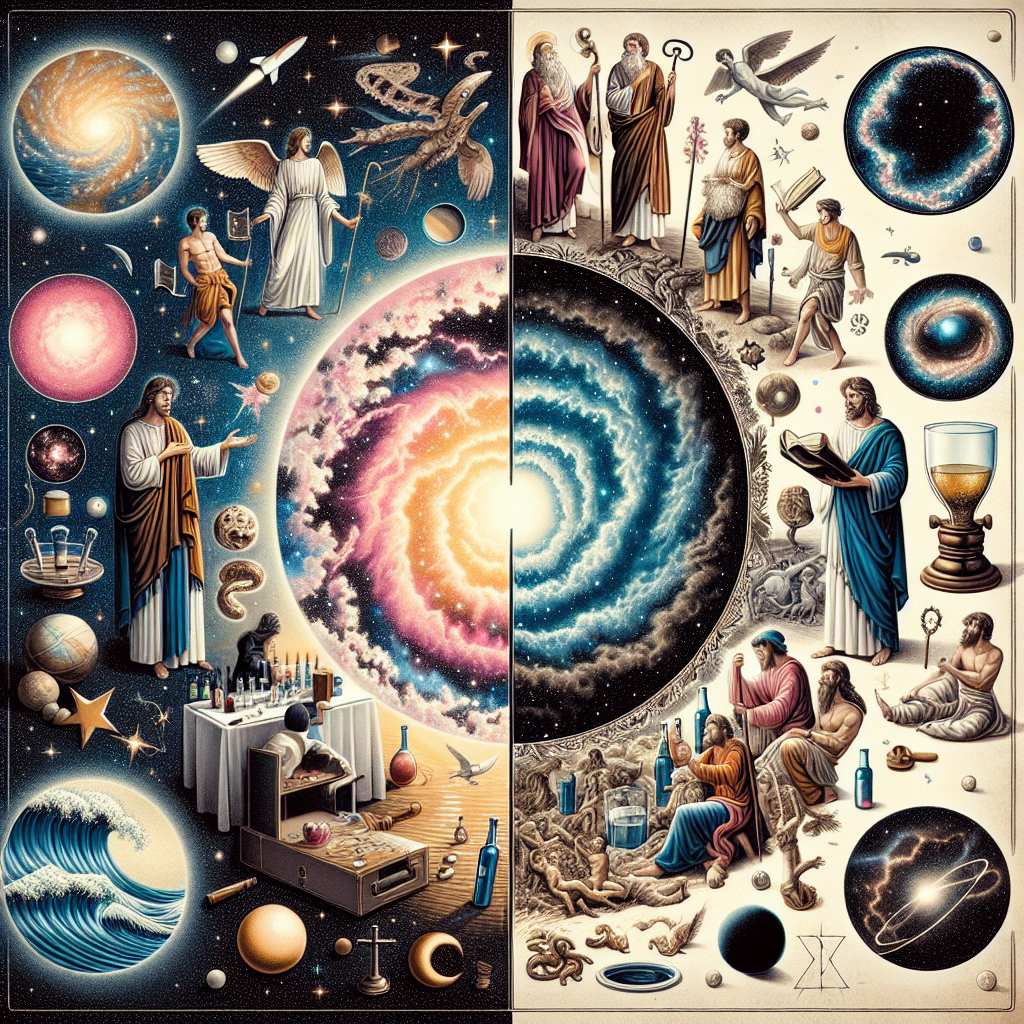In an age where science and technology dominate our understanding of the universe, the relationship between faith and scientific inquiry often seems fraught with tension. However, at their core, both science and faith seek to explore the mysteries of existence, albeit through different lenses. The universe, in all its vastness and complexity, can be viewed as a grand tapestry interwoven with threads of scientific discovery and spiritual significance. By examining both the cosmos and the miracles of the Bible, we can uncover a profound dialogue between faith and science that is not only enriching but also deeply inspirational.
The Language of the Cosmos
The cosmos is an awe-inspiring mystery that has intrigued humanity for millennia. Astronomers and physicists strive to unlock its secrets, seeking to understand the origins of galaxies, stars, and even the very fabric of space and time. From the Big Bang theory to the intricacies of quantum mechanics, science provides us with a framework to decipher the cosmos. It shows us that our universe is not just a backdrop to human existence but a dynamic and evolving entity full of beauty and wonder.
While scientific exploration is pivotal for understanding how the universe operates, it is essential to recognize that science does not operate in a vacuum. The quest for knowledge has led many scientists to contemplative questions about existence, purpose, and the divine. Some prominent scientists, such as Albert Einstein and Carl Sagan, have expressed a sense of reverence for the universe, often using terms that resonate with spiritual sentiment. This interplay between scientific discovery and a sense of wonder can inspire a deeper appreciation for the cosmos, inviting us to consider the possibility of a creator.
Miracles of the Bible: A Different Kind of Understanding
The Bible presents a tapestry of stories filled with miracles—acts that defy natural laws and illustrate divine intervention. From the parting of the Red Sea to the resurrection of Jesus, these narratives are steeped in theological significance. They serve as foundational stories that shape moral values, inspire communities, and offer hope in challenging times. Miracles are often viewed as direct manifestations of God’s power, reflecting a belief in a world where the divine is actively engaged with creation.
While the miracles described in the Bible may be challenging to reconcile with modern scientific explanations, they invite a different kind of exploration. Rather than viewing them as obstacles to scientific credibility, we can consider them as reflections of a profound truth—an acknowledgment of the mystery that surrounds human existence. Just as science seeks to uncover the how of the universe, the miracles of the Bible often address the why, offering insights into the purpose of life.
Bridging Faith and Science
The dialogue between faith and science is not one of opposition but of collaboration. Science teaches us about the mechanisms of the universe, while faith invites us to explore the meaning behind our existence. The two can coexist beautifully, enriching our understanding of both the natural world and spiritual truths.
For many, the cosmos serves as a magnificent backdrop to a spiritual journey. Astronomers like Giovanni di Paolo and physicists like Francis Collins, the director of the National Institutes of Health and a devout Christian, exemplify individuals who seamlessly integrate their scientific pursuits with their faith. They demonstrate that one can marvel at the universe’s complexity while also finding deep meaning in spiritual beliefs.
Moreover, recognizing the miracles within the context of the universe can enhance our appreciation for the interconnectedness of all things. Every time we look at the intricacies of a flower, the vastness of a galaxy, or the delicate balance of ecosystems, we might catch a glimpse of the divine handiwork. This perspective encourages a sense of stewardship and responsibility toward creation, urging us to care for our planet and each other.
Encouragement for the Seekers
For those grappling with the apparent divide between faith and science, it’s essential to approach these explorations with curiosity and openness. Rather than viewing the two realms as mutually exclusive, consider embracing the fullness of both. The miracles of the Bible offer profound insights and values, while science empowers us to investigate the universe with rigor and awe.
Children and young adults, in particular, are encouraged to explore both science and spirituality, recognizing that each path can enhance understanding and inspire creativity. Engaging with nature, asking questions, and participating in discussions that value diverse perspectives can lead to a more enriched worldview.
In conclusion, the interplay of faith and science is not a dilemma but an opportunity for deeper understanding. The cosmos invites us to explore, wonder, and learn, while the miracles of the Bible guide us to reflect on the significance of our existence. Together, they paint a picture of a world infused with meaning and mystery—one that encourages curiosity, compassion, and a celebration of life’s wonders. So let us journey forward, embracing the dialogue between faith and science, and celebrating the extraordinary in our everyday lives.
Explore and dig up answers yourself with our BGodInspired Bible Tools! Be careful – each interaction is like a new treasure hunt… you can get lost for hours 🙂


